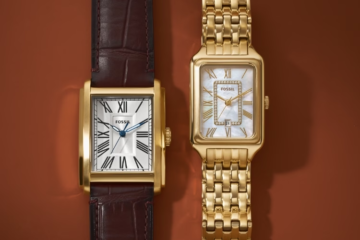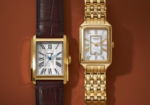What Hand Do Women Wear Watches?

Automatic watches are operated with the right hand. Women are more likely to wear watches on their dominant wrist. Which hand a woman prefers to wear her watch depends on her personal preference and the type of watch she wears. A left-handed woman, on the other hand, will most likely wear a watch on her left wrist.
Right-handed women are more likely to wear watches on their dominant wrist
Right-handed women are more likely to wear their watches on their dominant wrist, while left-handed women are more likely to wear theirs on the non-dominant wrist. This is because the non-dominant wrist is less likely to be used throughout the day and therefore is less likely to sustain damage from a watch. Additionally, since most people are right-handed, there is little reason to wear a watch on your left wrist.
Wearing a watch on your non-dominant wrist can help you feel more comfortable with your outfit. In addition to being a great way to express your style, a watch can double as a bracelet. But before you get started wearing one, you should first decide which wrist you’re most comfortable wearing it on. Most watches have a crown on the right side, so you’ll want to wear it near that bone. You’ll also want to make sure that the watch peeks out from under the cuffs of your shirt if you’re wearing a long-sleeved shirt.
Wearing a watch on your non-dominant wrist can help you avoid a variety of problems. First of all, a watch on your dominant wrist will be more likely to get damaged and dirty. That’s because you’re more likely to reach for chips or other objects with your dominant hand. Secondly, wearing a watch on your non-dominent wrist will make it easier for you to check the time.
If you’re right-handed, wearing a watch on your non-dominant wrist will free up your dominant hand for other activities. For example, when you want to write, you’ll probably feel more comfortable writing with your non-dominant hand.
Wearing a watch on your non-dominant wrist can also benefit your overall health. Wearing a watch on your non-dominant wrist will reduce the risk of wrist injuries and will not affect your ability to write. A left-handed watch is also less likely to interfere with your writing and will not hinder your ability to do tasks like writing.
Another reason to wear a watch on your non-dominant wrist is to avoid damaging it. Wearing a watch on your dominant wrist will increase the risk of an accident and can make it difficult to write. In addition, your watch may get accidentally knocked off your desk, causing it to suffer wear and tear.
A right-handed woman is more likely to wear a watch on her dominant wrist than a left-handed woman is. However, this is still a personal decision. Most people don’t really care which wrist a woman chooses to wear her watch. Wearing a watch on your non-dominant wrist makes it easier to check the time.
Wearing a left-handed watch on your non-dominant wrist should also be more comfortable for you. Left-handed watches aren’t as expensive as right-handed watches, and they are also more difficult to find. A right-handed woman is less likely to wear a left-handed watch on her non-dominant wrist.
Automatic watches are operated by the right hand
Automatic watches operate with a mechanical mechanism to keep time. This mechanism is wound automatically as the wearer wears the watch. When the wearer stops using the watch’s internal mechanisms, the watch pauses, but it can be brought back to life with the flick of a switch or a turn of the dial.
Women usually wind their watches using the right hand. However, men may also wind their watches manually. Winding a watch manually requires twisting the crown clockwise. Automatic watches may be wound indefinitely. Usually, it takes 30 full turns of the crown to wind a watch.
The right hand is the most dominant hand in a woman’s body. A right-handed woman has a more active right hand, which tends to wear down the watch movement. As a result, hard shocks can ruin or damage the watch movement. For example, a woman who plays tennis needs to use her dominant hand to keep the watch on.
Women who wear an automatic watch should wear it at all times. Its mechanism is very simple: a weighted rotor is mounted on the back of the movement. This rotor is usually shaped like a semi-circle and is connected to the mainspring via a series of gears. When the wearer winds the watch manually, the rotor spins on its axle, which winds the mainspring and powers the watch.
Most watches have a crown on the right side of the watch case. Left-handed people can access the crown with their left hand but can’t do it as easily with a right-handed person. This is due to the fact that most people wear their watches with the left hand.
Fashion dictates which wrist a woman wears a watch on
When it comes to watches, a woman’s left wrist is generally the best choice. This is because most women use their right hand as their dominant hand. However, wrist watches were not invented with modern technology. As a result, most women wear their watches on their left wrist.
A woman should wear a watch on the wrist that feels comfortable with her outfit. Men do not typically wear feminine-looking watches. It’s all about what you want to project. Depending on the occasion, you can choose to wear a masculine-looking watch.
The strap of the watch should fit snugly on the wrist and stay in place when you move your arm. Otherwise, the strap will appear loose and unprofessional. Another important point is to avoid wearing a huge watch that attracts too much attention and does not fit the proportions of your outfit.












